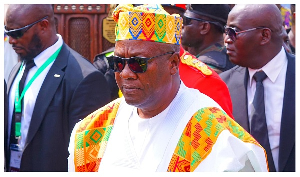In the vast expanse of financial services, the narrative of the ‘missing middle’ has persistently plagued economies around the world. Ghana, with its dynamic economy and vibrant entrepreneurial spirit, has not been immune to this challenge. However, amid this gap, a unique solution has emerged in the form of Savings and Loans companies (S&Ls) – offering a glimmer of hope to the businesses that have found themselves in this unique position.
Chasm in the Financial Ecosystem
Traditional financial systems have often presented a binary perspective: universal banks cater to large corporations and formal high-net-worth individuals, while microfinance institutions reach out to grassroots communities and informal markets. This dichotomy, while effective in their respective spheres, has left SMEs – often the lifeblood of economies – struggling to secure adequate financial resources for growth and sustenance.
SMEs constitute over 90% of businesses in Ghana, making significant contributions to employment and forming a substantial portion of the Gross Domestic Product (GDP).
Globally, SMEs generate more than 50% of jobs and account for around 35% of GDP in many emerging markets. These enterprises are pivotal for job creation, economic diversification and fostering innovation. Furthermore, they serve as a conduit for integrating marginalised groups such as women and youth into the economic mainstream. However, their potential impact remains hamstrung due to their limited access to credit and other financial services.
Savings and Loans Companies: An Innovative Response
Amid this economic conundrum, Savings and Loans companies (S&Ls) have emerged as a potent solution, designed explicitly to address the glaring gap between formal banking institutions and microfinance entities. These companies represent a hybrid model that incorporates the strengths of both formal and informal financial systems.
While universal banks typically extend substantial, long-term loans, S&Ls have recognised the potency of smaller, short-term advances. Borrowing from the practices of individual savings collectors prevalent in West Africa, S&Ls have crafted a unique approach that emphasises immediacy, accessibility and personalisation. This amalgamation of practices has paved the way for S&Ls to provide SMEs with tailored, swift and readily accessible financial solutions.
Empowering the Backbone of the Economy
The impact of S&Ls on Ghana’s economic fabric has been transformative. These institutions address a critical void by providing specialised financial services tailored to the distinctive requirements of SMEs. S&Ls serve as a bridge that empowers local businesses, granting them the tools to seize growth opportunities, navigate challenges and contribute more effectively to the nation’s economic trajectory.
It’s essential to highlight that World Bank data underline the criticality of SMEs. In many low-income countries, these enterprises account for more than 70 percent of employment. By fostering the SME sector, S&Ls not only stimulate job creation but also bolster the economy’s resilience and sustainability.
Moreover, S&Ls exhibit a profound understanding of the nuanced risks entailed by SMEs. This awareness equips them to make well-informed lending decisions that strike a balance between financial inclusivity and sustainable growth.
Navigating Challenges and Pioneering Innovation
The journey of S&Ls hasn’t been without obstacles. Positioned between the capital levels of microfinance institutions and commercial banks, S&Ls are tasked with a delicate balancing act. While their strategic placement enables them to serve both the lower and upper echelons of the missing middle, it also curtails their ability to extend larger loans.
The rapid progression of technology has been instrumental in shaping their evolution. Through digital transformation, S&Ls have optimised operational efficiency, expanded their reach and enhanced customer engagement. Mobile banking, digital lending platforms and inventive credit assessment methodologies have fortified their ability to serve both urban and remote SMEs.
GHASALC: A Collective Voice for Progress
The Ghana Association of Savings and Loans Companies (GHASALC) stands as a testament to the unifying force of S&Ls. Serving as the umbrella organisation for all Savings and Loans Companies, GHASALC brings all the S&Ls together under a shared platform – fostering networking, advocacy, policy engagement and financial literacy initiatives. GHASALC’s role in nurturing collaboration, sharing best practices and amplifying the collective impact of S&Ls cannot be overemphasised. It embodies the sector’s commitment to collective growth, development and shared learning.
Shaping the Future: Trends and Challenges
The S&L sector’s trajectory is marked by several defining trends. These include the rapid advancement of technology, fortification of governance frameworks, enhancement of risk management practices, and cultivation of collaborative partnerships. These trends are poised to shape the sector’s progression, ensuring its adaptability and capacity to navigate both opportunities and challenges.
In the context of Ghana’s economic landscape over the past five years, the sector has weathered transformative developments. These include a comprehensive sector clean-up, upheaval caused by the COVID-19 pandemic, repercussions of global geopolitics, dynamics of the national economy and the Domestic Debt Exchange Programme (DDEP). These events have not only underscored the sector’s resilience but also spotlighted the imperative of risk management, innovation and customer-centric strategies.
While developments such as the rapid digitisation of financial services have significantly improved accessibility, they have also brought forth challenges. Panic withdrawals, non-performing loans and implications of the Domestic Debt Exchange Programme have all presented hurdles to overcome. However, the sector’s positive trajectory is poised to prevail, propelled by its capacity for innovation, adaptability and the pursuit of inclusive growth.
Addressing Challenges and Charting the Course Ahead
The challenges are being met head-on. Constant engagement with regulators remains a cornerstone strategy. Market sensitisation and the enhancement of investor knowledge are pivotal; as informed investors are inherently better equipped to drive progress. Furthermore, S&Ls are fostering innovation and diversification beyond the confines of fixed income, transforming themselves from mere purveyors of financial services to innovative problem-solvers.
Collaboration, both within the sector and with organisations like the Ghana Microfinance Institutions Network (GHAMFIN), has been instrumental in addressing challenges and seeking solutions. The network’s engagement in advocacy, capacity building and information-sharing further amplify the sector’s voice and impact.
The Road Ahead: Potential and Aspirations
Looking ahead, the journey of S&Ls remains one of promise and potential. During Ghana’s evolving economy, S&Ls remain resolute in their mission – to empower SMEs, fuel economic growth and close the financial gap that has inhibited the missing middle. The trajectory of S&Ls – fortified by technological innovation, a commitment to financial literacy and the unity fostered by industry associations – is set to reshape Ghana’s economic canvas, one SME at a time.
The narrative of S&Ls in Ghana is a testament to the potency of innovative financial solutions in nurturing inclusive growth and steering sustainable development. As they continue to evolve, adapt and innovate, S&Ls emerge as a beacon of hope – redefining the role of financial institutions in fostering economic prosperity. The journey of S&Ls in Ghana underscores this future of opportunities and hope.
Business News of Thursday, 21 September 2023
Source: Tweneboah Kodua Boakye

















